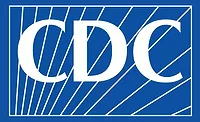CDC Reports Foodborne Illness Stats for 2009-2010
CDC has a long history of summarizing outbreak reports from local and state health departments. Data reported for each outbreak include the number of illnesses, hospitalizations, and deaths; the pathogens, toxins, and chemical agents that caused illnesses; the implicated food; the settings of food preparation and consumption; and factors contributing to food contamination.
CDC’s Foodborne Disease Outbreak Surveillance System gathers data on foodborne disease outbreaks from state, local, territorial, and tribal health departments. See reports summarizing the data.
 Data on Foodborne Disease Outbreaks during 2009-2010
Data on Foodborne Disease Outbreaks during 2009-2010
During January 1, 2009 through December 31, 2010, public health departments reported 1,527 foodborne disease outbreaks, resulting in 29,444 cases of illness, 1,184 hospitalizations, and 23 deaths.
- Among the 790 outbreaks with a laboratory-confirmed illness, norovirus was the most commonly reported infection, accounting for 42% of outbreaks; followed by Salmonella, with 30% of outbreaks.
- Of the 29,444 outbreak-related illnesses, 1,184 (4%) resulted in hospitalization. Salmonella caused the most outbreak-related hospitalizations (49%), followed by Shiga toxin-producing E. coli (16%), and norovirus (9%).
- Outbreaks caused by some pathogens were particularly severe. For example, Listeria outbreaks resulted in the highest proportion of persons hospitalized (82%), followed by Clostridium botulinum (67%), and paralytic shellfish poisoning (67%).
- Among the 23 deaths, 22 were linked to bacteria (9 Listeria, 5 Salmonella, E. coli O157, 3 Clostridium perfringens, and 1 Shigella), and 1 was linked to norovirus.
Identifying Common Foods and Germs
The pathogen-commodity pairs (germs and foods) responsible for the most outbreak-related illnesses, hospitalizations, and death in 2009-2010 were:
-
Illnesses
- Salmonella in eggs (2231 illnesses)
- Salmonella in sprouts (493 illnesses)
- Salmonella in vine-stalk vegetables (422 illnesses)
- Hospitalizations
- Salmonella in vine-stalk vegetables (88 hospitalizations)
- E. coli O157 in beef (46 hospitalizations)
- Salmonella in sprouts (41 hospitalizations)
- E. coli O157 in beef (3 deaths)
- Salmonella in pork (2 deaths)
- Listeria in dairy (2 deaths)
- Deaths
A large outbreak of Salmonella infections in 2010 caused nearly 2000 illnesses. Among the outbreaks attributed to a food vehicle composed of ingredients from only one of 17 defined food commodities, the commodities most often implicated were beef (13%), dairy (12%, nearly all unpasteurized), fish (12%), and poultry (11%)
Looking for quick answers on food safety topics?
Try Ask FSM, our new smart AI search tool.
Ask FSM →








